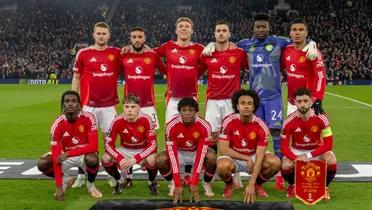How much Donald Trump will spend to keep Latinos out of the US and how much the 2026 World Cup will cost
Trump's return will change several things for sports in the U.S.

The arrival of Donald Trump will bring several changes to the United States, one of which will be the investment to curb the arrival of Latin Americans to its territory. But there will also be changes to the 2026 World Cup, where many fans from Latin America are expected to attend.
The Cost of Donald Trump's Policy Against Latinos: Economic, Social, and Political Impacts
During his presidency, Donald Trump implemented a series of policies that many viewed as aggressive and discriminatory toward the Latino community in the United States. His approach, largely focused on immigration, sparked intense and polarized debates about the future of Latinos in the country, a group that plays a fundamental role in the nation's workforce and culture.
1. Economic Cost
a. Reduction of Immigrant Labor ForceOne of Trump's most influential policies was the implementation of stricter measures to curb immigration, including the construction of a wall along the U.S.-Mexico border and reducing work permits for undocumented immigrants. Many Latino workers, particularly in industries such as agriculture, construction, services, and hospitality, were directly impacted. According to studies from institutions like the Migration Policy Institute (MPI), a reduction in the number of Latino immigrants could have had a negative impact on economic growth, particularly in rural areas and industries that rely on immigrant labor.
b. Increased Poverty and InequalityTrump's anti-immigrant policies also contributed to higher levels of fear and social insecurity among Latino communities. The fear of deportation affected the labor productivity of many undocumented immigrants and their families. This, in turn, contributed to rising poverty levels in some regions, as many Latino families faced increased economic hardship due to job loss or avoidance of public services for fear of being reported to immigration authorities.
c. Impact on Consumption and Local EconomiesThe uncertainty surrounding their immigration status and Trump's policies also affected spending behavior within Latino communities. Families feared being separated and were more reluctant to spend or invest, which had a ripple effect on local economies in areas with large Latino populations. While difficult to quantify precisely, this had an indirect impact on economic growth in several regions.
Costs for the United States Due to the 2026 World Cup
The 2026 FIFA World Cup, co-hosted by the United States, Mexico, and Canada, represents both opportunities and costs for the U.S., particularly in economic, social, and logistical terms. Below are some of the key costs that could impact the country:
1. Direct Economic Costs
a. Investment in InfrastructureOne of the biggest costs will be investment in infrastructure. While many host cities already have top-tier stadiums and transportation systems, significant improvements will be required in infrastructure, such as expanding airports, improving public transit, and constructing or renovating stadiums. These infrastructure projects will also include modernizing roads and expanding hotel capacity.
For instance, stadium renovation costs could reach billions of dollars, as some venues will need major upgrades to meet FIFA’s requirements. Major cities like Los Angeles, New York, and Chicago might have to make additional investments in stadiums and surrounding areas.
b. Security and LogisticsSecurity will be one of the top concerns, especially for an event of this magnitude. The cost of ensuring safety at all the stadiums, training sites, and transportation routes could be substantial. This includes both law enforcement presence and the necessary technological infrastructure to prevent threats. Ensuring the safety of international delegations, fans, and workers is also a key consideration.
2. Social Costs
a. Displacement of CommunitiesThe social impact is not insignificant. Some communities near the stadiums or construction areas could face displacement, loss of homes, or businesses. Large infrastructure projects, such as stadiums and other facilities, could lead to the demolition of neighborhoods and commercial spaces. This can create social tensions and affect the most vulnerable populations.
b. Temporary Decrease in Quality of LifeThe cities hosting the matches could experience temporary disruptions to daily life due to increased traffic, public transport congestion, and security restrictions. While some of these issues can be mitigated with proper planning, indirect costs for residents (such as rising prices for basic goods and accommodation) could lead to frustrations.
3. Environmental Costs
a. Environmental Impact of ConstructionThe World Cup will result in increased construction activity, which will inevitably generate an environmental impact. This can include carbon emissions from the building of new stadiums and the expansion of infrastructure such as airports and roads. While host cities may apply sustainability measures, such as reducing their carbon footprint and reusing materials, the event will generate a significant amount of waste and pollution in the short term.
b. Increased Tourism and Its ImpactThe influx of tourists and visitors for the World Cup will also have consequences for the environment. Mass tourism can put additional pressure on local resources, such as water and energy, especially in high-traffic cities.
4. Political Costs
a. Political Resistance and Local OppositionWhile the event has strong popular support due to the expected economic benefits, it may also face resistance at the local level. Communities that are not selected as host cities or those that do not see direct benefits may oppose the allocation of public funds for the event. Some local governments may question the cost of infrastructure and the social impact the World Cup could have on their communities.
b. Risk of Unequal BenefitsDespite the anticipated economic benefits from tourism, some areas may not benefit equally from hosting the event. Larger cities with more developed infrastructure (like New York, Los Angeles, or Miami) will receive more attention and a greater flow of visitors, while smaller cities may experience a greater burden in terms of investment and costs without a significant return in terms of tourism or economic development.
5. Opportunity Costs
a. Distraction from Other National ProjectsWhile the World Cup can attract a great deal of investment and international attention, it can also be a distraction from other more urgent national projects, such as improving education infrastructure, healthcare systems, or tackling poverty. Resources that are diverted toward the event, if not managed properly, could detract from other pressing national needs.
b. Focus on Entertainment vs. Social NeedsSome argue that public spending on an event like the World Cup should focus more on improving the everyday lives of citizens rather than financing an event that primarily benefits private sectors, such as large corporations, sponsors, and event organizers.
More news

LIVE | Alajuelense 1-0 Pumas UNAM: Round of 16 for the CONCACAF Champions Cup
14/03/2025

While Liverpool doesn't renew his contract, the European giant that made an offer to Van Dijk
14/03/2025

Who would be in Cristiano Ronaldo's dream team of teammates from his career?
13/03/2025

Which Premier League teams have won the UEFA Europa Conference League?
13/03/2025

Who are the players imitating Cristiano Ronaldo's iconic "Siu" celebration?
13/03/2025

The 10 players Ruben Amorim wants to remove from Manchester United
13/03/2025

What is the true value of Manchester United's squad Compared to Their 2024-25 Premier League Standings?
13/03/2025

What records could Cristiano Ronaldo still break with Al Nassr?
13/03/2025

What is Manchester City's squad value and how has it impacted their 2024-25 Premier League performance?
13/03/2025

What records has Cristiano Ronaldo broken in the Saudi Pro League?
13/03/2025

The European giant that showed interest in Paul Pogba now that he can return to playing football
13/03/2025

How to watch Al Nassr vs Al Kholood: Saudi Pro League Matchday 25 | Cristiano Ronaldo could continue to break records
13/03/2025

The blockbuster signing Atlético Madrid aims to secure after Champions League elimination
13/03/2025

The most disputed plays of game | Chelsea 1-0 København: Round of 16 of the Europa Conference League Today Full-Time
13/03/2025

The most disputed plays of the game | Tottenham Hotspur 3-1 AZ Alkmaar: Round of 16 of the Europa League Full-Time
13/03/2025

The most disputed plays of the game | Manchester United 4-1 Real Sociedad: Round of 16 of the Europa League Full-Time
13/03/2025

Julian Alvarez reacted to Atletico Madrid's defeat in the Champions League
13/03/2025

How to watch Alajuelense vs Pumas UNAM TODAY: CONCACAF Champions Cup second leg | Efrain's managerial challenge
13/03/2025



